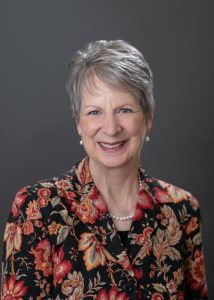 In Where the Wild Things Are, Maurice Sendak told the story of a young boy named Max. Dressed as a wolf, Max misbehaved and was sent to his room. There he had a temper tantrum and wound up in a mysterious place with beasts called Wild Things – monsters.
In Where the Wild Things Are, Maurice Sendak told the story of a young boy named Max. Dressed as a wolf, Max misbehaved and was sent to his room. There he had a temper tantrum and wound up in a mysterious place with beasts called Wild Things – monsters.
Childhood monsters sometimes manifest themselves externally. Kids at school in the 50s worried about Communists in closets and under beds, although I never saw one. Other monsters, those that reside in all of us, figured prominently in Parker Palmer’s The Active Life. One of his monsters is the fear of failure – ridicule, criticism, foolishness, which are some of my beasts, too.
To deal with monsters, Palmer referenced Annie Dillard’s Teaching a Stone to Talk: “In the deeps are the violence and terror of which psychology has warned us. But if you ride these monsters down, if you drop with them farther over the world’s rim, you find what our sciences cannot locate or name, the substrate, the ocean or matrix or ether which buoys the rest, which gives goodness its power for good, and evil its power for evil, the unified field: our complex and inexplicable caring for one another, and for our life together here. This is given. It is not learned.”
In his Wednesday, April 9, 2014 Reflection, Richard Rohr wrote: “Sooner or later, life is going to lead you… into the belly of the beast, into a place where you can’t fix it, you can’t control it, and you can’t explain it or understand it. That’s where transformation most easily happens.”
Sendak’s story didn’t delve into the belly of the beast or ride the monsters down. Max intimidated the Wild Things and eventually ruled over his monsters. Then he decided to return home for supper, which awaited him. This is a children’s story after all. But since Max engaged his monsters and played with them, perhaps he’s headed towards transformation.
“We must abandon the commonsense notion that the monsters we meet within ourselves are enemies to be destroyed,” Palmer wrote. “Instead, we must cultivate the hope that they can become companions to be embraced, guides to be followed, albeit with caution and respect. For only our monsters know the way down to that inner peace of unity and wholeness; only these creatures of the night know how to travel where there is no light.
Having to go places without light in order to find the light is this week’s message, the message of Maundy Thursday, Good Friday and Easter.
May you ride your monsters into those depths and find what Palmer describes as “the source and the power that make us fully alive.”



A lot of transformation did go on, too, in Sendak’s book. Watch the moon throughout. Great post!
Indeed, Max’s world of imagination grew like the waxing moon. Thanks for your comment, Luanne!